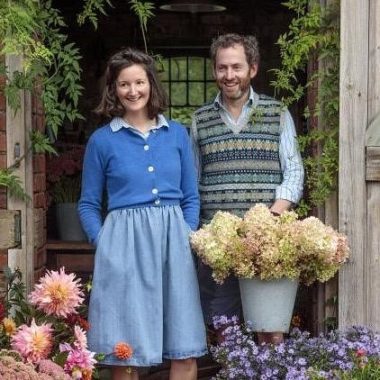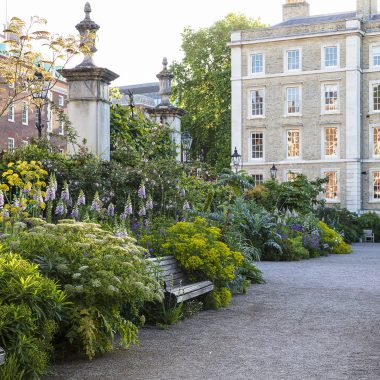All you need to know about Sweet Peas – Top tips for growing this ravishing flower.
Philip Johnson of wwww.johnsonssweetpeas .co.uk has been captivated by sweet peas ever since his childhood. ’I first grew them when I was 9 years old’. A doyen of sweet pea aficionados Philip is extraordinarily knowledgeable about sweet peas and more than happy to share his tips for growing this beguiling flower. A bunch of sweet peas is a true harbinger of summer. The next few weeks are the ideal time for planting out seeds and where better to source them than from Philip’s own nursery.
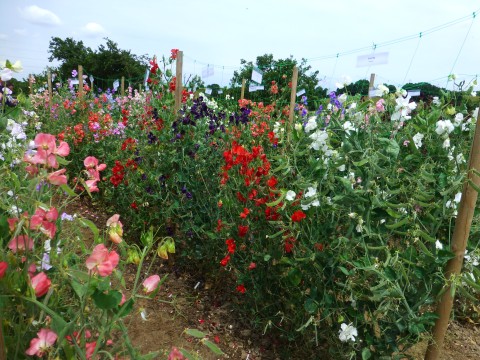
Sweet peas in all their glory at Johnson Sweet Peas nursery.
‘I love the colours and the scent’ says Philip, who is the Kent representative of the National Sweet Pea Society (www.sweetpeas.org.uk) and has been judging sweet peas at the Kent County Show since 1988. He is also the Chairman Designate of the RHS Sweet Pea trials to be held at Wisley in 2015 (www.rhs.org.uk/gardens/wisley) when more than 40 varieties will be grown and assessed.
Sweet peas conjure up a particularly English image so it is heartening to hear from Philip that ‘England is the world centre of sweet pea expertise. More breeding goes on in this country than anywhere else in the globe’. A Sicilian monk, Cupani sent the first sweet peas to England in 1699.
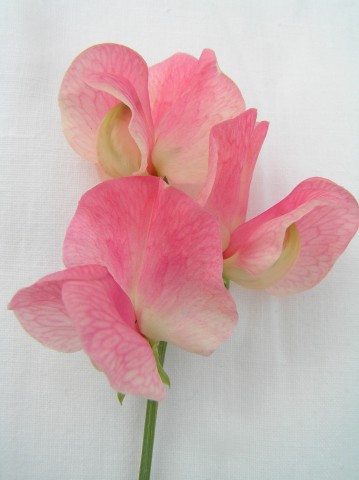
‘Emily’ A modern grandiflora sweet pea.
The strangest twist in the story of sweet peas is their role in experiments that extraordinarily distinguished Victorian polymath, Sir Francis Dalton (1822-1911), a cousin of Charles Darwin did to invent the idea of regression (or ‘reversion’ as he originally called it) in 1877. He asked his friends to grow sweet peas to help ascertain how overall variance remains constant from generation to generation – he found that increased variance in some lines is exactly matched by regression towards the mean in others.
Philip’s nursery has been selling a thrilling selection of seeds for sale since 2007. Dark purple, vivid pink with white centres, subtle mauve and white are just a few of the wide range of colours available including a new introduction for 2015 – the white flowered ‘Invicta’ . Bred by Phil Christmas from Pembury, near Tunbridge Wells it is resistant to bud drop and well suited to exhibition or cut flower production. Kentish folk will know that ‘Invicta’ is the motto of the county of Kent meaning invincible.

‘Invicta’ a new ‘Spencer’ sweet pea introduction for 2015.
Philip‘s Top Tips for Successful Sweet Pea Growing
The First Batch
October/November is the perfect time to plant the seeds in the SE of England. ‘I like to plant 6 or 7 seeds in a 1 litre pot filled with John Innes No.1. It is still warm enough for them to germinate in 7-10 days without using additional heat. An important part of the process is to grow the seedlings as hard as possible exposing them to plenty of cold weather. This way they will develop strong plants with a vigorous root system and very little top growth. Too much protection will result in spindly seedlings. Don’t pinch the tips until the end of January. If pinched too early the seedlings will branch off in very long side shoots.

A tray of perfectly grown sweet pea plants waiting to be planted out and burst into bloom.
Plant out the seedlings about 20cm apart and water in as early as you can in March having already added lots of well-rotted organic matter in the autumn. Add some fish blood and bone and they will get off to a flying start’. And hey presto by May you should have glorious flowers to admire and pick.
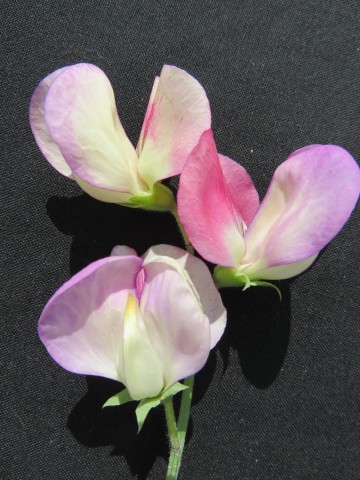
‘Fire and Ice’ an Old Fashioned sweet pea.
Second Batch
Plant between January and April and give the seeds a bit of artificial heat to get going. Pinch the tips out after two pairs of leaves have formed.
Seeds from Johnsons
The choice of seeds is extensive and it is all too easy to get carried away gazing at the pretty pictures on the Johnsons website and buy pack after pack. There are four categories available:
- Old Fashioned – First introduced about 100-120 years ago they have plain small flowers but are very floriferous with 2-3 blooms on a stem. Strongly scented making them ideal for picking. 1.5m – 2m in height.
- Spencer – Much bigger plants with frilly flowers. The long stems have 4 blooms or more per stem. First introduced at Althorp, Northamptonshire (www.althorp.com), the childhood home of the Diana, Princess of Wales, in 1900. 2-2.5 metres tall.
- Modern Grandiflora – Philip describes these as ‘half-way house’ in flower size between the Old Fashion and the Spencer varieties. They also have clamped keels. 2 metres tall.
- Semi-dwarf – ‘They are smothered in flowers and ideal for pots’. The stems are quite short so perhaps not the best to grow for pots.
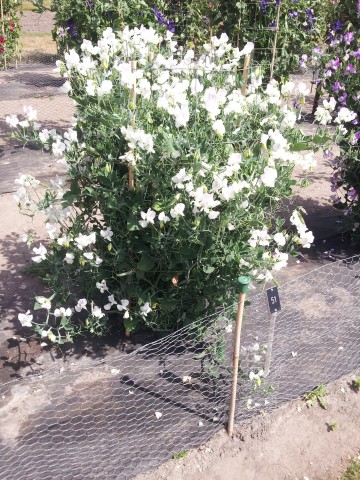
A delectable vision – a mass of Solway Snowflake.

‘Solway Snowflake’ a semi-dwarf sweet pea.
And for those of you who are nervous of growing sweet peas from seeds, Johnson’s also offers autumn sown plants available for dispatch in March and April 2015. Spring sown plug plants will also be available in April and early May. *NB* Stock is limited so order early to avoid disappointment.

‘Milly’ an old fashioned sweet pea.


